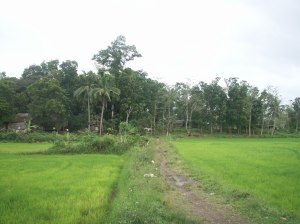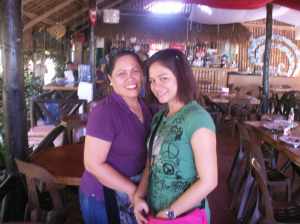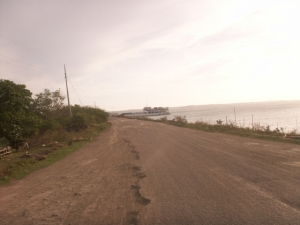The other day I talked about how an MFI figures out the potential market for their services in an area. A simple calculation using statistics provided by the government offers a high-level estimate of the number of women in the target profile. But it is also important to understand the situation on the ground – who is there already and what are they doing? On a recent market research trip with some NWTF staff, I learned how to get the answers to those questions. The team included the director of the research department, a research officer, the regional manager of the NWTF branches in Cebu, and four prospective loan officers from Kalibo (henceforth referred to as “the girls”). To get the answers to these questions, we employed two strategies – individual interviews and focus groups – and split up.
The girls were responsible for walking around the villages we’d visit and interviewing women about their businesses. Using a PPI form to screen for women below the poverty line and a questionnaire, the girls gathered statistics that later would be aggregated and analyzed back at the office. The questionnaire asks their household income, whether it is regular or seasonal/contractual, whether or not they own a business. The girls ask the interviewees to estimate the amount of capital needed for their business, and, if given a loan, what they would purchase (with a corresponding cost estimate). Lastly, they ask what they would do with 5,000 pesos – the minimum loan for a first-time client – how much amortization they can afford, and what mode of payment would be suitable (daily, weekly, monthly, etc.).
The girls interviewed about 70 women in four or five villages. We would actually drive the van around looking for poor neighborhoods and, when we’d see a cluster of house, the girls would get out and start walking. The problem with finding the poorest people in a municipality is that you have to find where they live first. If they live right on the main road, they are probably doing well enough that they don’t require the services of a microfinance institution. So there is a lot of walking involved, though it is not difficult to find people. 40% of the country lives below the poverty line, and 80% of them are in the rural provinces. Therefore, your odds of finding the target demographic in a rural province are much higher than in Manila or Bacolod. So while the girls looked for women to interview, we’d go round up a group of women for a focus group.
The purpose of the focus group is more to find out a) what other MFIs currently operate in the region, and b) what services the women value most. Once we’d dropped off the girls for interviews, we’d track down a woman that belongs to one of the other MFIs in the region. We’d ask them to track down some of their friends – also members – and offer 500 pesos to be split evenly between them. This process never usually took more than an hour. Once we had the group assembled, the research officer would inquire about the other MFIs and press them on their loan packages. What is the interest rate and amortization? What are the terms? How often do they meet for repayments? Do they offer insurance? What is the minimum weekly savings required? (I will explain these last two concepts in another post.). Once we had that information, we’d ask to rank in terms of importance the criteria for choosing an MFI – the selection criteria. The first focus group ranked it as follows:
- Interest rate
- Requirements
- Mode of payment (i.e. how often are the center meetings)
- Loan amounts
- Collateral requirements
- Policy of loan (does it require a proposal, does it need to be an existing business, etc.)
- Insurance (what are the terms and payouts)
- Loan amortization
- Savings requirements.
We did three focus groups over the four-day trip. Once the different groups corroborated the information about the competitors, the work was finished. We finished Thursday afternoon, drove to Iloilo City on the southern tip of Panay and spent the night. I was thinking about staying for the Dinigyang Festival – think Mardi Gras with a religious slant. Unfortunately, I ate a nasty siopao (meat dumpling) on the ride down and got food poisoning. A drug cocktail of immodium, aspirin, and dramamine got me through the two-hour ferry ride back to Bacolod.
This is how an MFI expands. There are a few other administrative things to handle. For example, we had to drive around the different towns to determine whether or not the area had a local bank branch. One the loan officers make the daily collection, the branch needs somewhere to deposit the cash. Without a local bank, it would remain in cash, which is unfeasible.
The next step is to analyze all of this data in aggregate and make a recommendation. The research department will prepare a report to present to the board of directors. If it is approved, NWTF will open a branch in the area.




